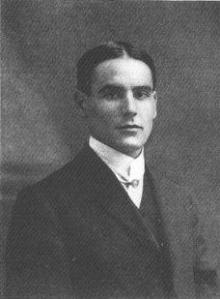You’ve probably guessed today’s author: Oscar Wilde! Although today he is known mostly for his fabulous one-liners and extreme quotability, Wilde was a controversial character in his own day. The Picture of Dorian Gray (1890) was his first and only novel, and the strong homoeroticism and hedonism made it infamous from the start. While our Irishman had already been accused of sodomy – yes, he was gay – , still a crime in Victorian Britain, the Labouchère Amendment (1885) made it possible for him to be convicted for anything that could be described as “gross indecency”. I kid you not; the Victorians had designed an amendment making immoral behaviour under the label of “gross indecency” illegal. Of course it soon became synonymous with homosexuality, and here’s where The Picture of Dorian Gray came back to bite Wilde in the ass.
In the beginning of the novel, Dorian Gray was a perfectly innocent dandy. When his good friend Basil Hallward paints Dorian’s picture, Dorian’s new mentor Lord Henry Wotton laments the tragedy that the picture, transfixed in time, will stay beautiful and young forever, while Dorian will wither and decay. In a fit of narcissism, Dorian makes a Faustian bargain and says he would give his soul for the picture to age in his stead. (Note: you should never say aloud “I would give my soul for ̶ ”)
Under the influence of Lord Henry, Dorian starts practicing and spreading his new hedonist philosophy of pleasure as the highest good, leading many a young gentleman astray. Unfortunately, the likeness between Dorian and Oscar was immediately detected by the Victorian public, and the novel became evidence against Wilde during his trials.
Now, how does all this relate to Darwin? Well, in one word: Degeneration. Of course I’m not suggesting that Charles Darwin and Oscar Wilde were a couple of degenerates. However, On the Origin of Species (1859) and Dorian Gray both deal with the theme of degeneration … according to their contemporaries at least. You see, the Victorians were very protective of their moral ideology, and the idea that human beings are the product of evolution did not fly well with their very rigid world view. These Victorians, with their obsession with moral degeneration, saw their own body image degenerate from the image of God to evolved apes.
The study of physiognomy was also still very popular at the time: the belief that you can tell a person’s character and soul from their appearance. Good guys are always beautiful, villains are ugly and deformed. That’s why Dorian Gray’s picture not only ages, but becomes marred with every sin he commits.
In sum, Darwin’s work created both a huge crisis of faith and an overall identity crisis, changing the way people viewed their bodies. Oscar Wilde portrayed these tensions in his novel: he destroys the eternal soul, makes the ephemeral body eternal, and literalizes the fear of degeneration. His novel paved the way for later horror writers to write about the degenerating and deformed body, and for me to write about them!
Preview: Next week I’ll leave the Victorians behind and fill you in on how this Edwardian pretty boy fixed his distorted body image:


